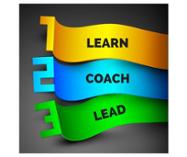[:en]“You must hear the very same thing over and over again” my coachee said, as we finished the session.I have to admit, he caught me off guard and caused me to pause. I think one of the things I have learned in my years of coaching through helping and challenging people in different situations, stages of their lives and parts of the world, is that there are no two people that share the exact same situation, thoughts or ideas.
Every person may choose a commonly used word to describe a situation, a goal or particular challenge; the definition will be the same in the dictionaries, but the way we apply it in our lives and act on it, what it actually means to us, that will be different from one individual to the next. When I’m teaching about active listening, questions and perspectives in our coaching class and discussing questions and perspectives for our new coaches, I stress and constantly reinforce the importance of asking for definitions all of the time. We can never assume we know what the other person is thinking or actually means if we do not take the time to ask. If I were to ask you about your definition of transformation would it be the same as what the person sitting next to you might say? Transformation to one person maybe an immense change, a 180 degree shift in another direction, while to another it may mean the smallest notable difference. And what if I were to ask what success looks like for you, would it be the same as your peer, friend or partner? They can mean so many different things and the way we choose to exhibit them and reach them are even more different. Our upbringings, cultures, experiences are what define our views, perspectives and ideas of what we want things to look like when we work towards them or achieve them. Just like you have your definition of what success might look like when you achieve it, I might have another way of seeing success; we must always remain open to listening and asking about other’s ideas and views. Actively listening may help us refine our ideas, they may show us other possibilities we had not thought of, or they may reinforce what we know to be our way of seeing it. The next time somebody says they want to improve their time management or they want to be successful, surprise them, change it up a bit, rather than telling them what they need to do and giving advise, pause and ask them what it means? Give them an opportunity to define it for you, and themselves – you will be surprised at what happens…first I can almost guarantee they will be surprised you even asked and are interested in listening, then they will start to think about it and answer. Three things will happen: you will have helped someone put words and descriptions to what they really mean and would like to see; secondly you will learn about other definitions of something you may have thought differently about; finally you will have engaged them in conversation really understanding what they mean and able to respond in a more knowledgable way. Just ask them, what does that mean to you? or what does it look like? The answer I gave my client was “I actually don’t hear the same things over and over again, I hear the same words, but every coachee has a different definition of what they want to achieve or change; I listen and help them develop that definition into an actionable plan so they can achieve what they want. I don’t assume that their version of change or development is the same as mine.” The words we use may be similar but when we actually put it into practice it looks completely different from one person to the next. It’s what makes us unique and human. Ask away![:]
